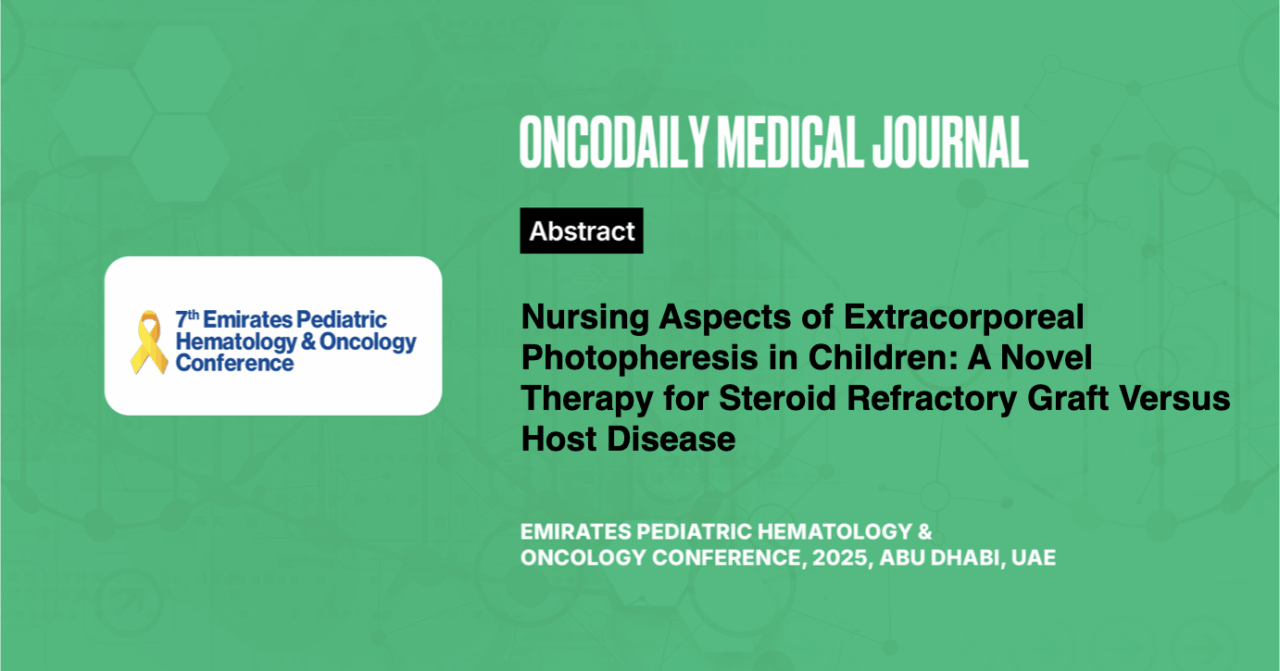Nursing Aspects of Extracorporeal Photopheresis in Children: A Novel Therapy for Steroid Refractory Graft Versus Host Disease
Abstract
Introduction: Graft versus Host Disease (GVHD), especially steroid-refractory is a dreaded complication of hematopoietic stem cell transplantation. Extracorporeal photopheresis (ECP)is a form of apheresis therapy for steroid-refractory GVHD. The peripheral blood mononuclear cells are separated by apheresis and exposed extracorporeally in a collection bag to ultraviolet A [UVA] light in the presence of a Psoralene compound called 8-Methoxypsoralen and then infused into the patient. The procedure carries unique nursing challenges in children who are critically ill, and we wish to share our initial experience in ECP. The study aimed to see the impact of ECP on children with immunosuppressant-refractory GVHD.
Methodology: We collected data prospectively on all children undergoing ECP at our center from February 2016 to December 2023. We counselled the parents for the ECP procedure and obtained informed consent. A femoral apheresis line was placed by the anaesthetist, and we checked the blood parameters and vitals during the apheresis. All children required priming the kit with PRBC, and we connected the inlet line in the red colour lumen and the return line in the blue lumen to collect lymphocytes.
We checked a baseline VBG to record the calcium level of the child and mid procedure, and if low, replaced calcium infusion through IV infusion of calcium gluconate. We recorded circulatory changes, including fluctuating blood pressure, ranging from low to high during and immediately after the procedure. As the children received citrate, we watched for chills, tingling around the lips or fingers, a sour taste in the mouth, muscle cramps in the legs, or irregular heartbeats.
We also monitored for reactions related to a blood transfusion, including itching, rash, hives, shortness of breath, back pain, or fever. We monitored for shortness of breath, coughing, or raised blood pressure due to extra-treated white blood cells during infusion of the treated white blood cells. The adverse effects of 8-MOP include photosensitivity, and the child should avoid sunlight, even indirect sunlight coming through a window.
Results: Our study included a total of 40 children (n = 40) with a male-to-female ratio of 3:1. The age of the participants ranged from 1 to 18 years. There were 25 (62.5%) children who had a malignant disorder, Acute Myeloid Leukemia being the most common one, and 15 (27.5%) children had a nonmalignant disorder, hemoglobinopathy being the common one. Donor type was predominantly an alternate donor in 25(62.5%) children and a matched family donor in 15 (27.5%) children.
The source of stem cells was mainly PBSC in 35 (87.5%) children, and the remaining 5 (12.5%) children had bone marrow as the stem cell source. The indication for ECP was chronic in 26 (65%) children and acute in 14 (35%) children, and the organ affected was mostly skin and musculoskeletal, followed by gut, lung, and liver. Most of these children had GVHD at multiple sites. ECP was administered as a second- or third-line treatment following the failure of immunosuppressants and progressive GVHD. The number of ECP sessions ranged from 1 to 8 before a response was observed. Clinical improvement was noted in 70% of the children. However, there was a 50% mortality rate, attributed to various confounding factors.
The main problem was venous access in children with sclerodermatous skin or with extensive skin rash. The second problem was hemodynamic instability, and close monitoring of blood pressure and fluid boluses was required in most of the children. Calcium replacement was required in all children. Infusion toxicity of the ECP product was documented in one child. Once a week, ECP was better tolerated than two sittings a week, which resulted in exhaustion and fatigue. There was no procedure-related mortality.
Conclusion: ECP is feasible in India with the support of an anesthetist and an intensive care team. Nursing care required during and after apheresis is unique and needs a trained team. Our initial experience of 40 patients with a 70% response rate is encouraging in this group of children with no other curative option for steroid-refractory GVHD.





